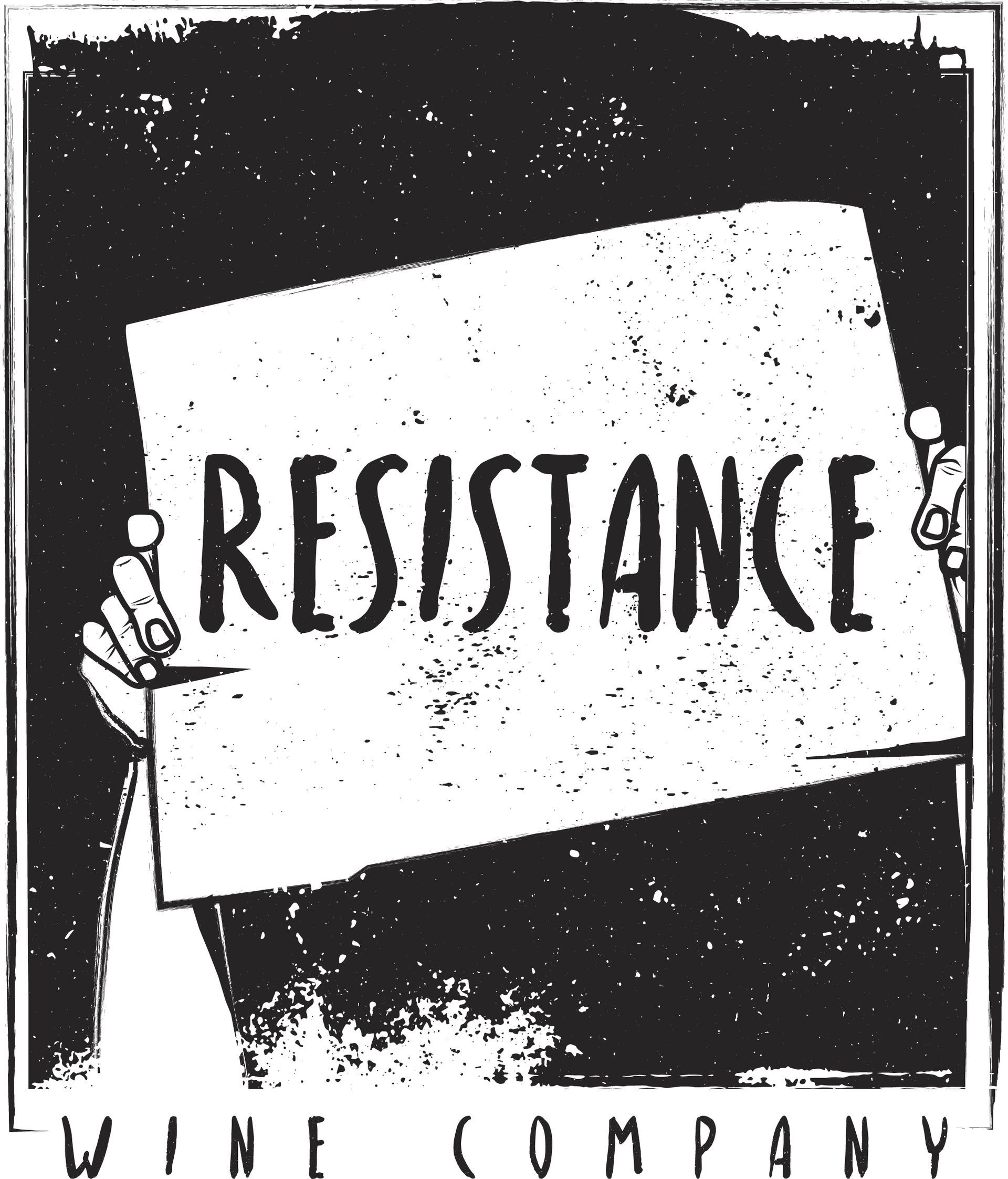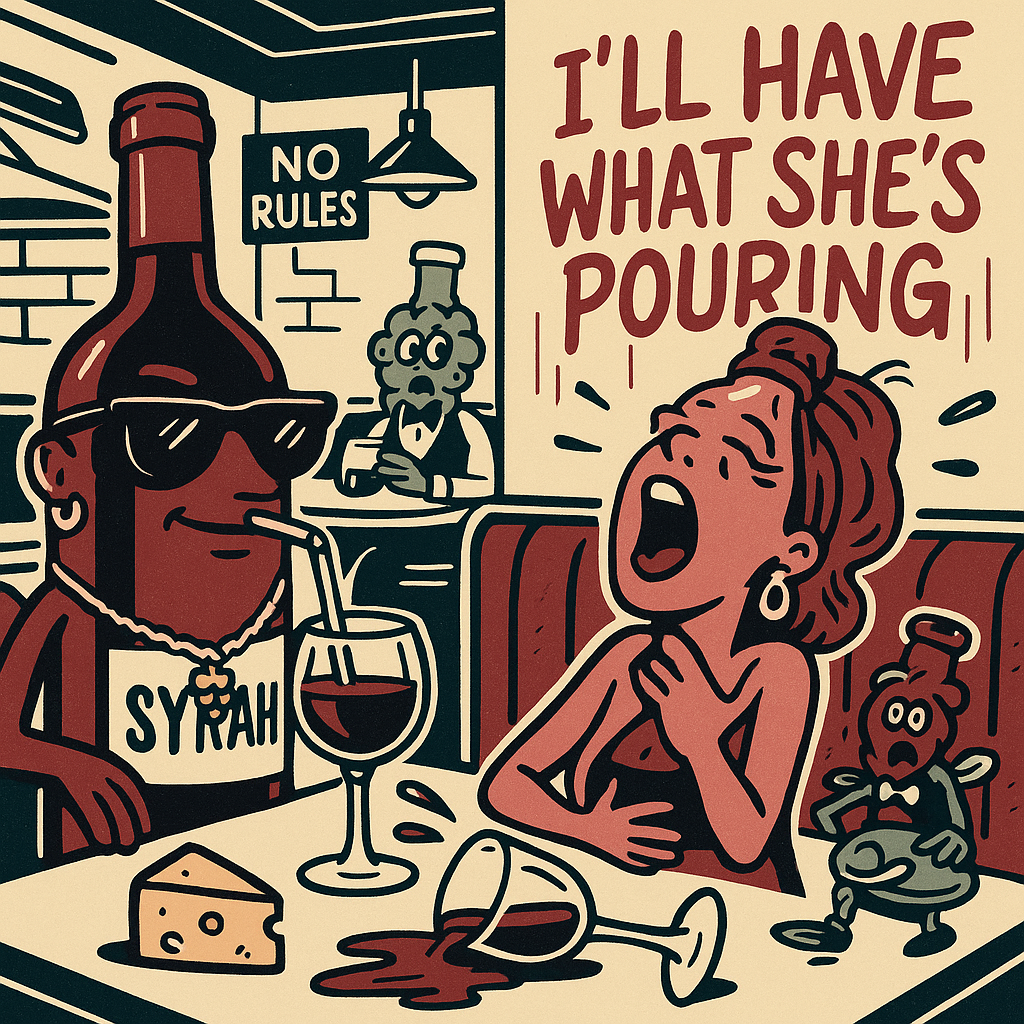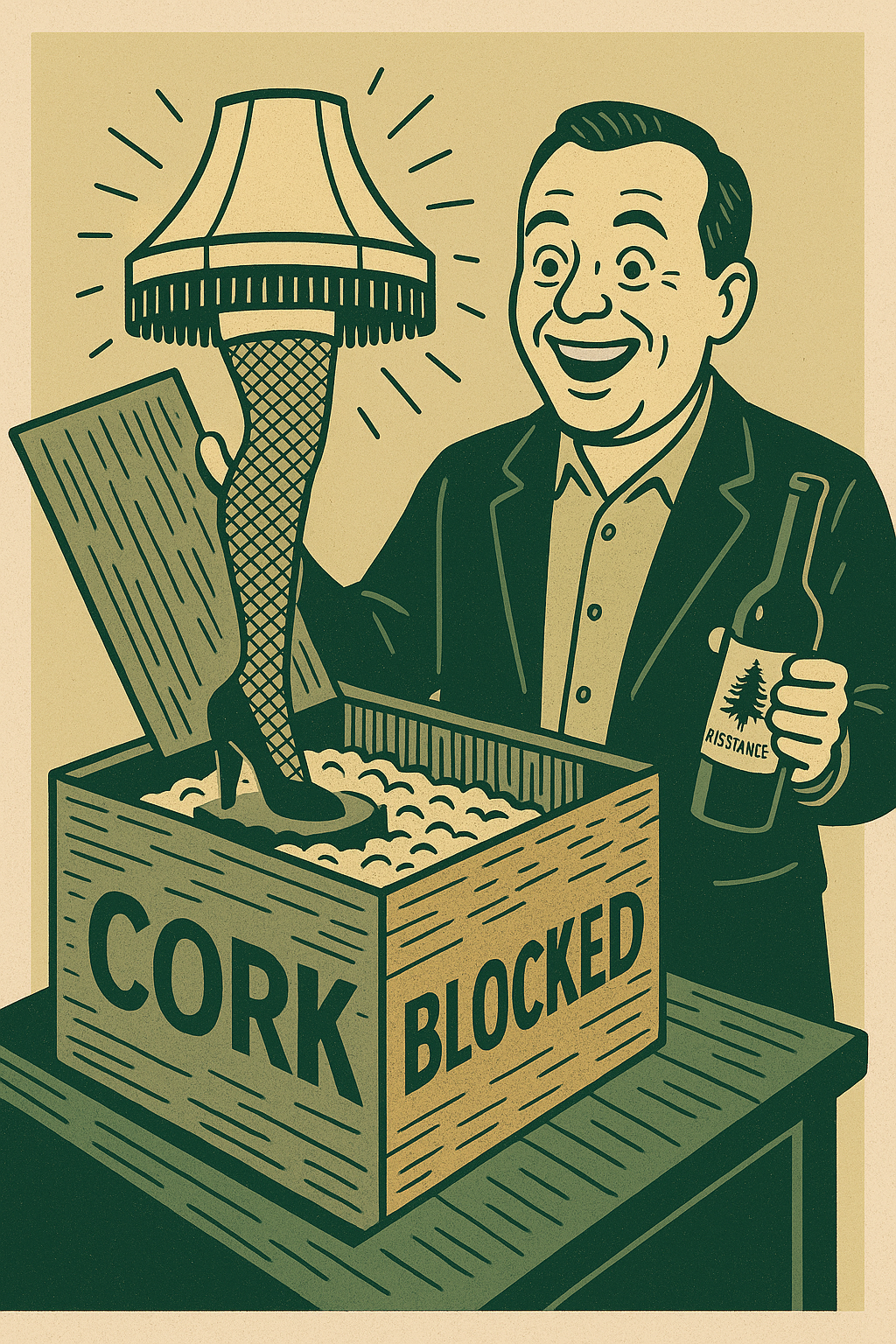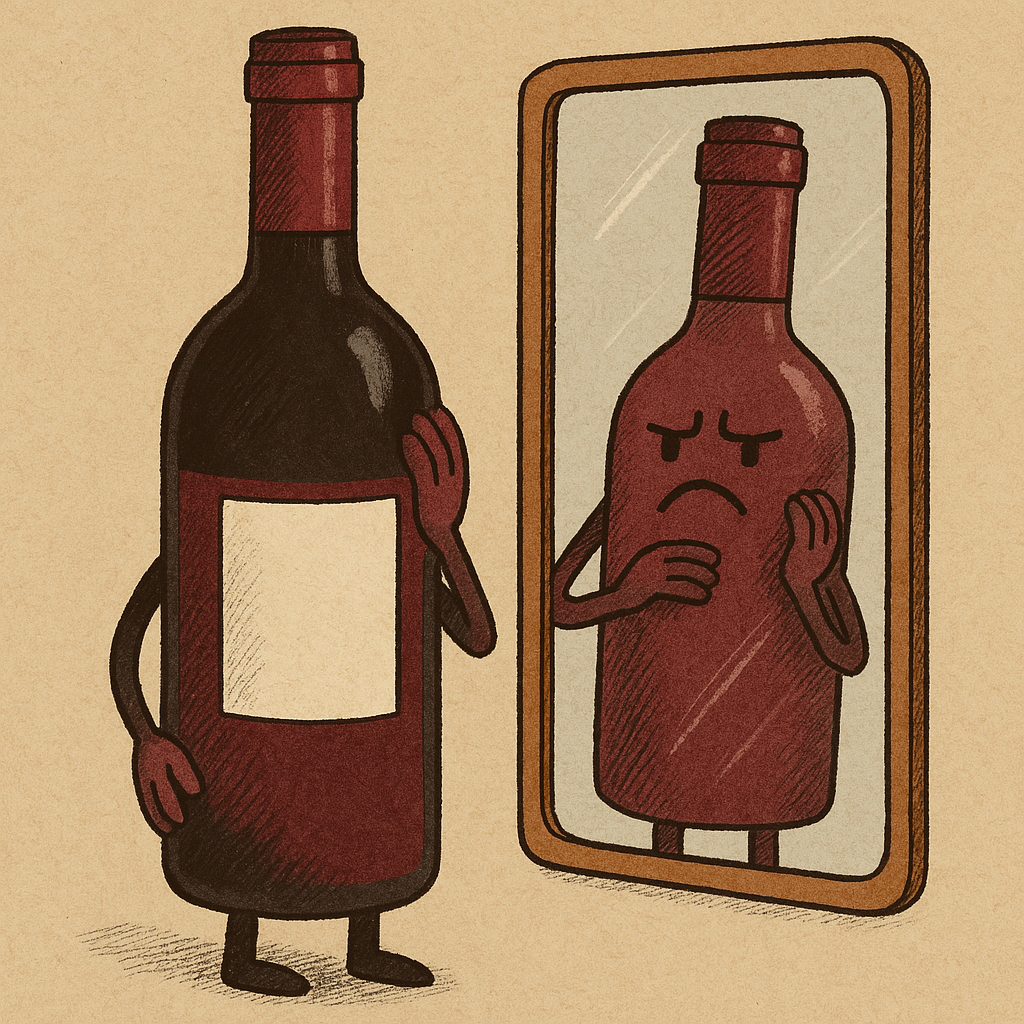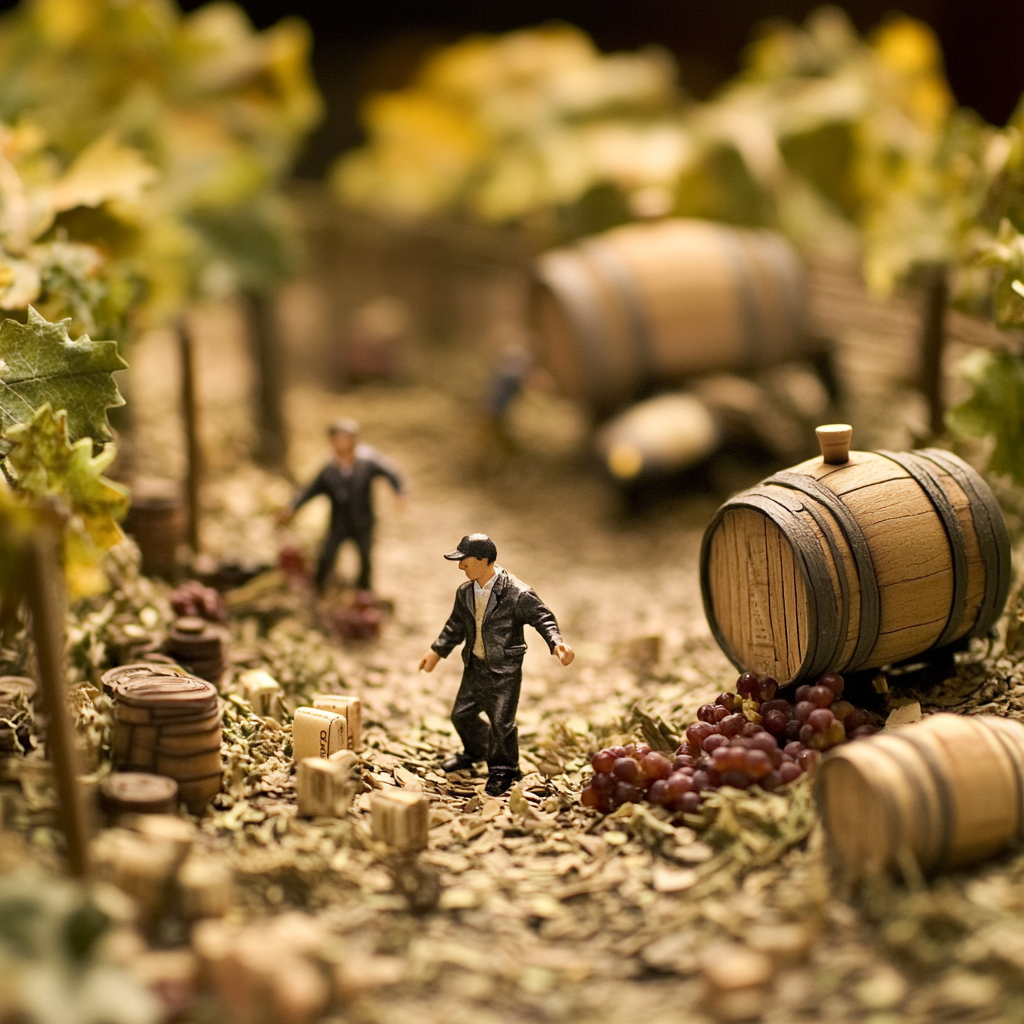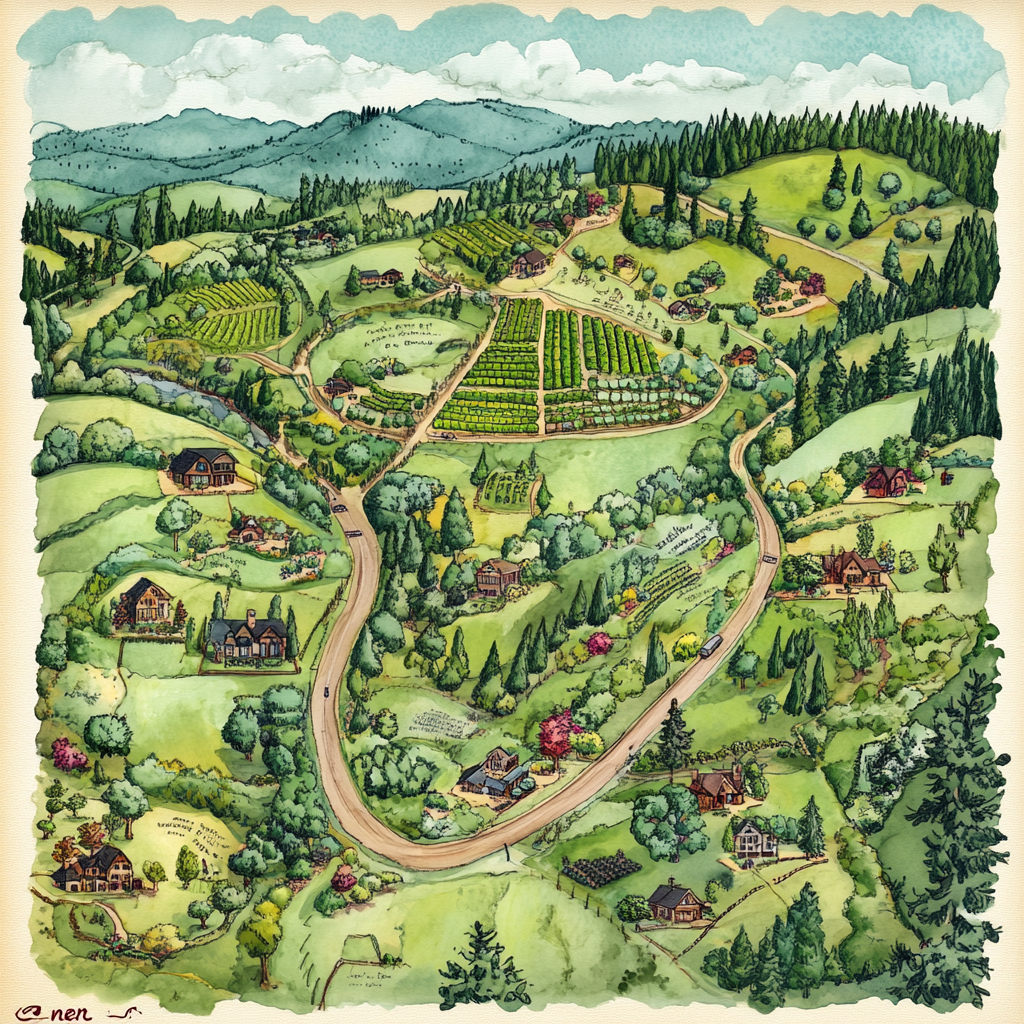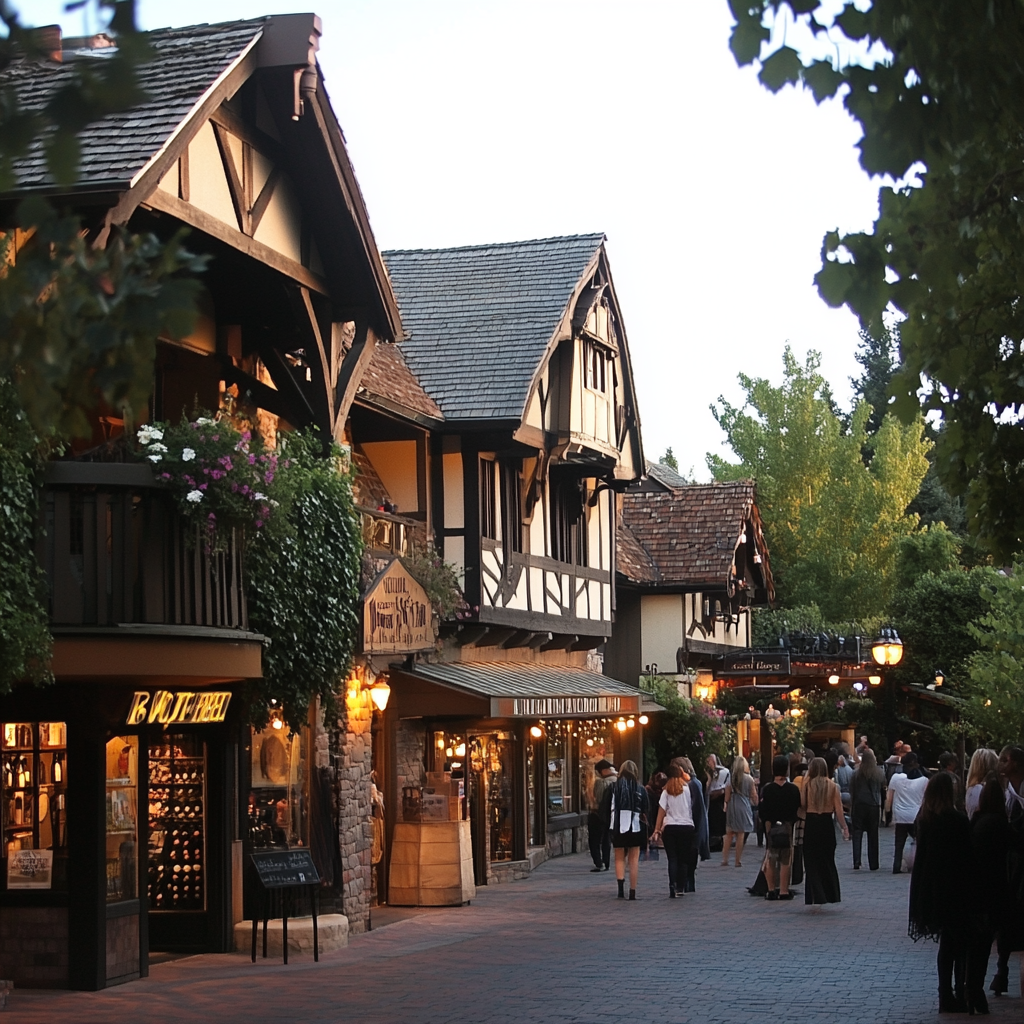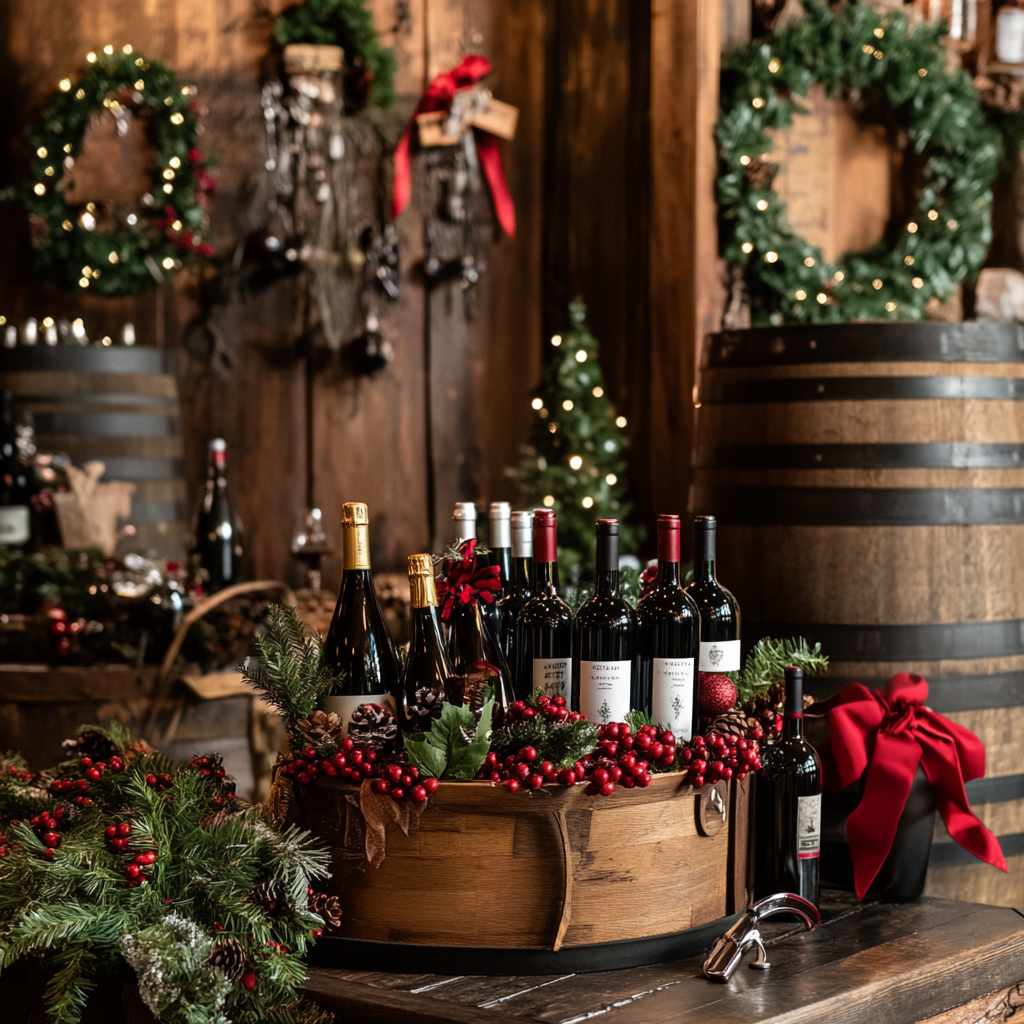1. The Oak Influence: Vanilla, Spice, and Everything Nice
First things first—let’s talk about oak. Most wine barrels are made from oak, and that’s not just because it looks pretty in a cellar. Oak imparts a variety of flavors to the wine, depending on the type of oak, the age of the barrel, and how long the wine spends in it.
- American Oak: This type of oak tends to be bold and brash, kind of like the cowboy of the barrel world. It imparts strong flavors of vanilla, coconut, and even a hint of dill. American oak barrels are often used for big, robust wines that can stand up to these strong flavors, like Zinfandel or
Cabernet Sauvignon. We use a hybrid barrel (half American/half French) for the 2022
Tempranillo.
- French Oak: French oak is more like the suave, sophisticated cousin. It adds subtle, elegant flavors like clove, cinnamon, and cedar. Wines aged in French oak often have a smoother, more refined palate, making it the go-to choice for wines like Chardonnay, Pinot Noir and our
Syrah and
Malbecs.
- Toasting Levels: The inside of the oak barrel is toasted (think of it like toasting a marshmallow), and the level of toasting can dramatically affect the flavors imparted to the wine. A light toast might add more subtle, sweet vanilla notes, while a heavy toast can bring out smoky, roasted coffee or chocolate flavors.
2. Acacia Barrels: The Floral Understudy
Now, let’s bring Acacia into the spotlight. While oak tends to steal the show, acacia barrels are like that unexpected supporting character who ends up being your favorite. Acacia wood doesn’t pack the same flavor punch as oak, but what it does add is a subtle, floral complexity that’s particularly lovely in white wines.
- Floral Notes: Acacia barrels are known for enhancing the natural floral aromas of the wine, adding notes of jasmine, honeysuckle, and even a touch of orange blossom. If you’ve ever had a white wine with a delicate bouquet that made you think of walking through a flower garden, there’s a good chance acacia was involved. The Resistance
Collab and
Sauvignon Blanc both use Acacia.
- Preserving Freshness: Unlike oak, acacia doesn’t impart those heavy vanilla or spice flavors. Instead, it helps preserve the fresh, vibrant character of the wine, making it a popular choice for aromatic whites like Sauvignon Blanc or Viognier. It’s like the wine gets to keep all its bright, zesty personality while picking up just a hint of something extra.
3. Aging and Oxygen: The Slow Dance of Time
When wine is aged in barrels, it’s not just sitting there—it’s interacting with the wood and the air. Oak barrels are slightly porous, which allows a small amount of oxygen to seep into the wine over time. This slow oxygenation process softens the tannins in the wine, making it smoother and more approachable.
- Softening Tannins: Tannins are what give wine its structure, but they can be a bit harsh when the wine is young. Aging in barrels helps mellow out these tannins, making the wine rounder and more balanced. Think of it as the difference between a fresh-out-of-college grad and someone with a few years of life experience—both have potential, but the latter is usually more polished.
- Flavor Development: As the wine ages in the barrel, it starts to pick up those delicious oak-derived flavors like vanilla, spice, and toast. But that’s not all. The wine also develops more complex flavors as it interacts with oxygen and undergoes micro-oxidation. This is where you start to get those secondary and tertiary flavors like dried fruit, leather, and tobacco in older wines.
4. The Barrel’s Role in Texture: Smooth Operator
Barrels don’t just add flavor—they also play a big role in the wine’s texture. Wines aged in barrels tend to have a richer, creamier mouthfeel, thanks to the way the wood interacts with the wine.
- Malolactic Fermentation: If you’ve ever heard someone describe a wine as “buttery,” they’re talking about the results of malolactic fermentation—a process that often takes place in the barrel. This fermentation converts the sharper malic acid in the wine into softer lactic acid, giving the wine a creamy texture and those signature buttery flavors, especially in Chardonnay.
- Integration: Over time, the flavors from the oak and the wine itself start to meld together. This integration is what gives barrel-aged wines their complex, layered profiles, where no one flavor overpowers the others, but rather, they all work in harmony.
5. New vs. Old Barrels: Fresh vs. Subtle
The age of the barrel also has a big impact on the wine’s flavor.
- New Barrels: A new barrel is like a spice bomb—full of intense flavors just waiting to be released. Wines aged in new barrels tend to have strong oak characteristics, which is great if you’re looking for a big, bold wine.
- Old Barrels: As barrels age, they lose some of their punch. By the time a barrel has been used a few times, it’s imparting much subtler flavors to the wine. This allows the fruit and terroir characteristics of the wine to shine through more clearly, making older barrels ideal for more delicate wines.
Conclusion: Barrels, the Unsung Heroes of Wine
So there you have it—the lowdown on how barrels impact wine tasting. Whether it’s adding flavors like vanilla and spice, softening tannins, enriching texture, or simply letting the wine develop over time, barrels are the unsung heroes behind many of the world’s greatest wines. And don’t forget about acacia, the floral understudy that brings something extra special to the table. The next time you enjoy a glass of beautifully aged wine, take a moment to thank the humble oak (and acacia) barrel—it’s been hard at work making sure that every sip is as smooth, complex, and delicious as possible. Cheers to that!
Want to learn more about wine tasting -
check out this blog!
